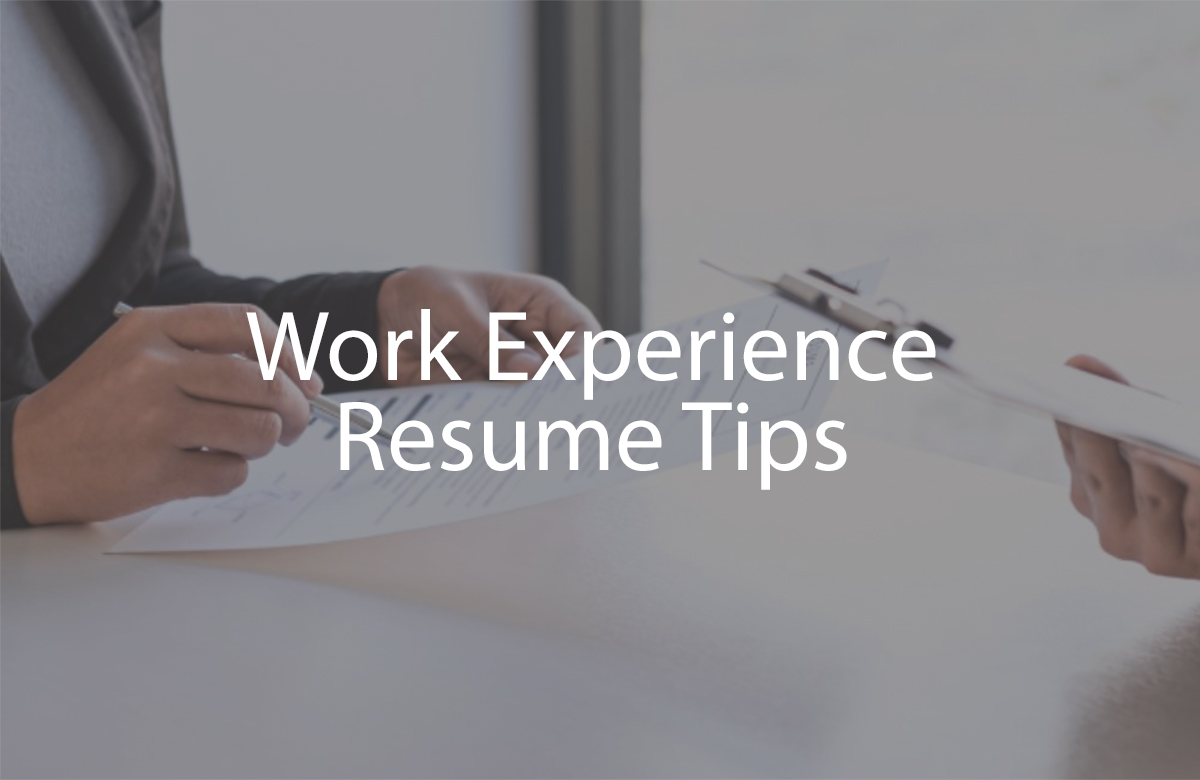
Work Experience Resume Tips
Certainly! Here are some tips for effectively presenting your work experience on your resume:
Reverse Chronological Order: List your work experience in reverse chronological order, starting with your most recent job and working backward. This format is the most common and makes it easy for employers to see your most recent and relevant experience first.
Consistent Formatting: Maintain a consistent format for each job entry. Include the following details for each position:
Job title
Company name
Location (city and state)
Dates of employment (month and year)
Use Action Verbs: Begin each bullet point describing your job responsibilities and achievements with strong action verbs. These verbs convey a sense of accomplishment and action. Examples include “managed,” “developed,” “implemented,” “achieved,” etc.
Quantify Achievements: Whenever possible, use specific numbers, percentages, or metrics to quantify your achievements. For instance, mention how you increased sales by a certain percentage or managed a team of a specific number of employees. This adds credibility to your accomplishments.
Focus on Achievements: While listing your job responsibilities is important, place more emphasis on your accomplishments and contributions. Employers want to know how you added value to your previous employers.
Tailor Your Content: Customize your job descriptions to align with the requirements of the job you’re applying for. Highlight the skills and experiences that are most relevant to the position.
Highlight Relevant Skills: Mention any skills or qualifications that are particularly relevant to the job you’re seeking. For example, if you’re applying for a management role, emphasize your leadership and team-building experiences.
Be Concise: Keep your bullet points concise and to the point. Avoid lengthy paragraphs or excessive details. Aim for a balance between providing enough information to showcase your qualifications and keeping it easy to read.
Include Promotions: If you received promotions or took on increased responsibilities within the same company, be sure to mention them. This demonstrates your growth and adaptability.
Use Industry-Specific Keywords: Incorporate industry-specific keywords and phrases related to your field. This can help your resume pass through applicant tracking systems (ATS) and be seen by human recruiters.
Avoid Jargon: While industry-specific keywords are important, avoid using excessive jargon that may be unfamiliar to a broader audience. Use clear and concise language that anyone can understand.
Highlight Relevant Experience: If you have a diverse work history with jobs in different fields, focus on the experiences and skills that are most relevant to the job you’re applying for. You may need to omit or briefly mention less relevant roles.
Show Career Progression: If your work history demonstrates a clear progression in responsibility or skill development, emphasize this progression in your job descriptions. It showcases your growth and dedication.
Proofread: Carefully proofread your work experience section for typos and grammatical errors. Errors can detract from the professionalism of your resume.
Seek Feedback: Ask a trusted friend, mentor, or professional contact to review your resume and provide feedback. They may catch details or improvements you might have missed.
Remember that your work experience section is a critical part of your resume, and it should effectively communicate your qualifications and achievements to potential employers. Tailoring your content to match the job you’re applying for and presenting it clearly can greatly increase your chances of landing an interview.

Comments are closed.